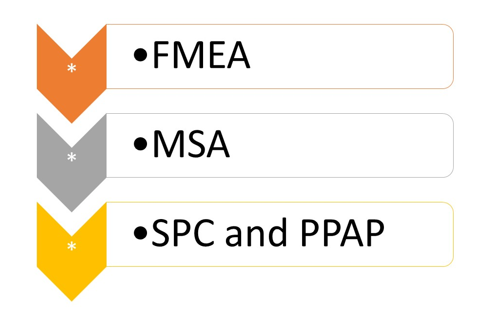Excellence then, is not an act, but a habit. – Aristotle
Healthy competition in an industry is always to be welcomed. From an economic perspective, customers know that they have options that will supply them their desired product or service, at the quality and price that they desire. Companies cannot afford to be complacent, or else they will lose the business that sustains them. Operational Excellence is the tool that keeps an organization on edge, and consistently challenging itself to satisfy its customer.
Ongoing improvement in an organization is the result of the integration of High Performance Habits, Process Excellence, Continuous Improvement and the associated Tools and Development Processes. Continuous deliberate action is the driver of success. Patience and feedback are critical to sustaining this critical improvement loop, which will drive the organization to success. These are the underlying tenets of Operational Excellence.
Embedded in Operational Excellence is the need to satisfy customer requirements via a system known as Advanced Product Quality Planning (APQP). Modern supply chain systems, regardless of industry, are very complex by nature. This complexity is what induces the possibility of various modes of weaknesses, known as failures, along the process chain. When a process system is being developed, these points or flaws often crop up and must be addressed in order to satisfy operational requirements. With more mature systems, that have undergone the appropriate systems analysis and rectifications, the operating process is significantly smoother. This article helps to iron out the kinks in the early phases of process commissioning, so that satisfying customers will be much easier down the line.
APQP is the structured process approach used to facilitate quality control in any manufacturing and service system. Following along the ISO requirements, APQP is built into the Plan, Do, Check and Act Feedback cycle of continuous lean practices. Developed via manufacturing best practices in the automotive industry, the system has been widely implemented in other industries. The APQP systems are highly applicable to integrated systems in a supply chain, and help to keep the system as a unified whole.
Utilizing a plethora of tools to facilitate its smooth operation, the system has a pre-identified Core Tool Set that ensure that APQP is up and running. By no means exhaustive, effective APQP tools include: Failure Mode and Effects Analysis (FMEA), Measurement Systems Analysis (MSA), Statistical Process Control (SPC) and Production Part Approval Process (PPAP).
Adopting the principles of early product and process design, system flow from suppliers to customers is seamless as a result. With the ability to communicate across each supply chain component, it is easy for project teams to collaborate for the final customer objectives. Just like all Lean Projects, using the Voice of the Customer as a baseline, all system capabilities are organized to facilitate this outcome. Built into all aspects of the operational and distribution chains, the customer requirements are integrated.
A simple example of APQP is utilized in the alumina manufacturing process. Globally, there are various ores of aluminum hydrate (alumina) that is available for processing. Alumina is the feedstock for the aluminum smelting process, which is an expensive electrochemical process. Alumina smelters are always attempting to reduce their costs, and have identified that the quality of the feedstock is a direct impactor to this parameter.
Embedded in most bauxite ores, is the impurity silicon oxide (silica), which is a glass. There has been a pre-identified direct relationship between the silica content, and the cost of aluminum smelting. Smelters have thus requested target levels of this parameter, and other impurities in their feedstock. With their suppliers, they have established a customer satisfaction index, which influences the pricing that they pay for their feedstock.
Using this charter, which is the voice of the customer, alumina refinery design their system operations to meet these quality requirements. At each phase of the extraction and recovery processes, process conditions are identified that facilitate the achievement of the appropriate customer requirements. If the customer’s requirements are not met by the end of the process, downstream blending or process re-work will be facilitated to correct the problems.
The APQP, with the tools identified, ensures that the process conditions are adhered to, that facilitate the satisfaction of the customer. If the targets are not being met, appropriate reactions plans with step by step process adjustments are utilized to restore the target. These tools manage the process risks and facilitate the customer satisfaction. Via an integrated network of the various systems, the entire supply chain is ultimately satisfied. Utilize the attached checklist to help your organization to optimize its APQP Practices.

